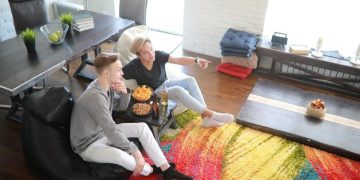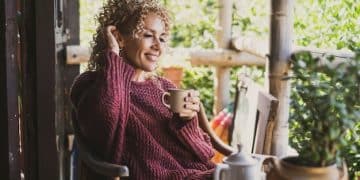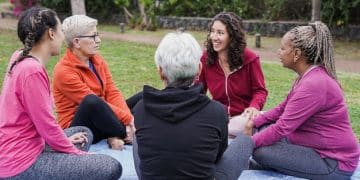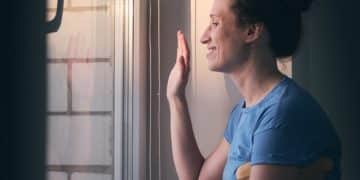The Ultimate Checklist: A Safe Home for Seniors in 2025
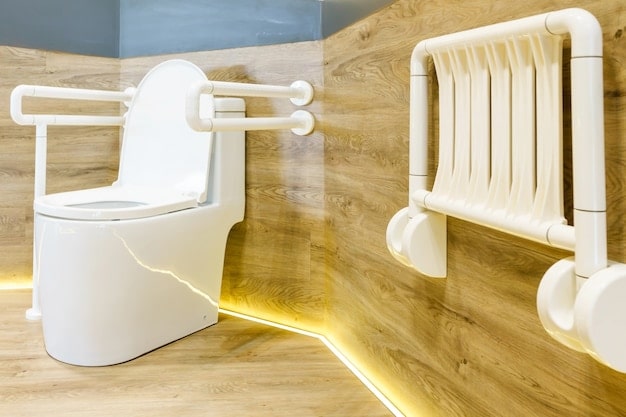
Creating a safe home environment for seniors involves addressing potential hazards and implementing modifications to prevent falls, ensure easy navigation, and promote overall well-being, addressing physical and cognitive changes that come with aging.
Ensuring the safety and well-being of our senior loved ones is a top priority. This involves proactively identifying and mitigating potential hazards within their living environment. This article provides the ultimate checklist for creating a safe home environment for seniors, offering practical tips and modifications to promote independence and peace of mind.
Understanding the Importance of Senior Home Safety
Maintaining a safe home environment is crucial for seniors as it directly impacts their independence, health, and overall quality of life. As people age, they may experience physical and cognitive changes that increase their risk of falls, accidents, and injuries within their homes.
By proactively addressing potential hazards and making necessary modifications, we can create a living space that supports their well-being, allowing them to age comfortably and safely in place.
Why is Home Safety Important?
Home safety helps to prevent accidents and injuries that can lead to hospitalizations and reduce the ability of seniors to continue to live independently at home. By implementing adaptations, you can minimize the risk and improve the quality of life.
- Reduces Falls: Falls are a leading cause of injury among seniors. Modifying the home can significantly reduce the risk.
- Promotes Independence: A safe home environment allows seniors to maintain their independence and continue living in their homes longer.
- Enhances Comfort: When seniors feel safe in their homes, their overall comfort and peace of mind are improved.
- Supports Cognitive Health: Reducing clutter and simplifying tasks can help seniors with cognitive impairments navigate their homes more easily.
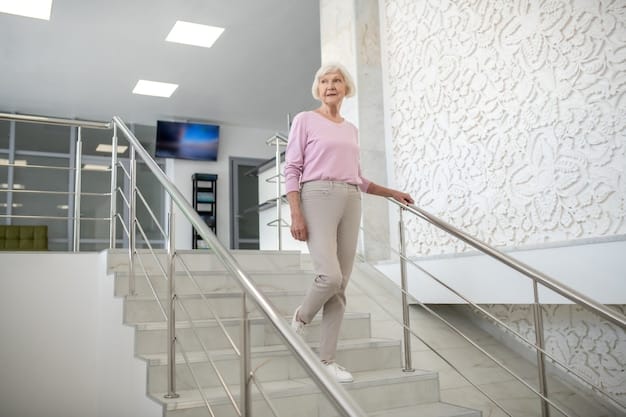
Creating a safe home is an ongoing process. Regularly assessing the home and making necessary adjustments ensures that it continues to meet the evolving needs of the senior.
Assessing Potential Hazards
A comprehensive home safety assessment is the first step in identifying potential hazards. Walk through each room, looking for risks that could lead to falls, injuries, or other accidents. This assessment should include a review of lighting, flooring, furniture placement, and accessibility.
This detailed evaluation will help prioritize areas for improvement and ensure that the living space is as safe as possible.
Key Areas to Assess
- Lighting: Poor lighting can increase the risk of falls.
- Flooring: Loose rugs, slippery floors, and uneven surfaces can cause trips and falls.
- Furniture Placement: Cluttered pathways and unstable furniture can be hazardous.
- Accessibility: Difficulty reaching essential items can lead to dangerous reaching or climbing.
Proper lighting is essential throughout the entire home. Ensure that these areas such as hallways, staircases, and bathrooms are well-lit.
Fixing loose rugs, securing carpets, and addressing any uneven flooring are very important to do. Eliminate the potential tripping hazards, which reduces the risk of falling.
Bathroom Safety Measures
The bathroom is one of the most dangerous rooms in the house for seniors due to slippery surfaces and limited space. Implementing safety measures in the bathroom is crucial to prevent falls and injuries.
Installing grab bars in the shower and near the toilet is essential for providing support and stability. Non-slip mats can also help prevent slips.
Essential Bathroom Modifications
To improve everyone’s safety, certain modifications may be necessary to reduce the risk that they face.
- Grab Bars: Install grab bars in the shower and near the toilet.
- Non-Slip Mats: Use non-slip mats in the shower and on the bathroom floor.
- Raised Toilet Seat: A raised toilet seat can make it easier to sit down and stand up.
- Walk-In Shower: Consider a walk-in shower to eliminate the need to step over a tub.
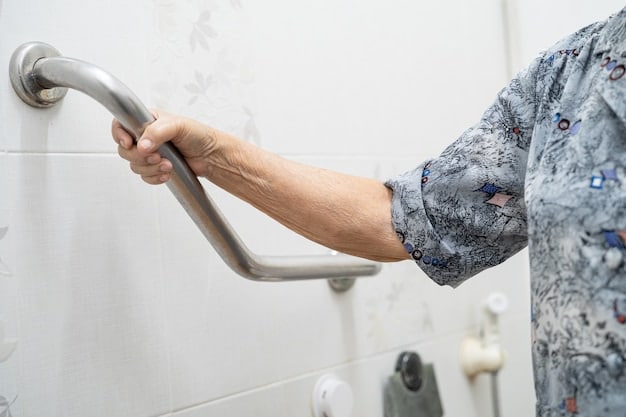
Modifying the shower to be a walk-in can dramatically improve the experience. This helps to avoid any accidents that may arise from missteps.
Kitchen Safety Tips
The kitchen is another area where seniors are at risk of accidents, particularly burns, cuts, and falls. Making the kitchen safer involves organizing the space, improving lighting, and using assistive devices.
Keep frequently used items within easy reach to avoid bending or stretching. Ensure that knives are stored safely, and consider using assistive devices to make cooking easier.
Enhancing Kitchen Safety
Organization is key to reducing the risk in the kitchen. Keep countertops free from clutter to give everyone plenty of space to maneuver around.
- Organize the Space: Keep frequently used items within easy reach.
- Improve Lighting: Ensure adequate lighting to avoid accidents.
- Use Assistive Devices: Consider using assistive devices to make cooking easier.
- Check Expiration Dates: Regularly check expiration dates to ensure food safety.
When cooking, proper clothing and equipment could be the difference in a bad or good day. Be sure to use the right tools and wear appropriate clothes.
Regularly checking expiration dates on foods can help to avoid eating something that may make someone sick. Pay attention to these dates closely and you will be fine.
Bedroom Safety Enhancements
The bedroom should be a comfortable and safe space for seniors. Making a few key adjustments can significantly reduce the risk of falls and other accidents during the night.
Ensure that there is adequate lighting near the bed, including a bedside lamp that is easy to reach. Consider using a bed rail to provide support when getting in and out of bed.
Creating a Safe Bedroom Environment
Many falls actually occur when getting up to use the restroom late at night. Bedside lighting can help someone see their way and avoid tripping in the dark.
- Adequate Lighting: Place a lamp near the bed that is easy to reach.
- Bed Rails: Use a bed rail for support when getting in and out of bed.
- Clear Pathways: Ensure there is clear space to move around.
- Comfortable Bed Height: Adjust the bed height to make it easier to get in and out.
There should not be anything on the floor that could cause someone to trip, such as loose clothes, or anything hard to see.
The goal is to have a good setup so that if someone needs to get up late at night, they can easily find what they need and avoid any potential risks.
Living Room Modifications
The living room is often a central gathering place, so it’s important to ensure it is safe and comfortable for seniors. Rearranging furniture can improve accessibility and reduce the risk of falls.
Remove any clutter or unnecessary furniture that could obstruct pathways. Ensure that seating is at a comfortable height and provides adequate support.
Optimizing the Living Room for Safety
Choosing the right space for the living room is important. Consider how much room someone has to move around and whether it is easily accessible.
- Rearrange Furniture: Remove clutter and ensure clear pathways.
- Comfortable Seating: Provide seating at a comfortable height with adequate support.
- Secure Cords: Keep electrical cords and wires out of walkways.
- Accessible Items: Keep essential items within easy reach.
Keeping cords out of walkways helps to prevent accidents as someone moves around the room. Use something as simple as tape to hold it down.
The best way to arrange a living room for safety is to consider how much room someone will need to move around, as well as making sure that nothing is blocking their path.
| Key Point | Brief Description |
|---|---|
| 💡 Lighting | Ensure all areas are well-lit to prevent falls. |
| 🛁 Bathroom Safety | Install grab bars and non-slip mats. |
| 🪜 Stair Safety | Ensure stable handrails and sufficient lighting. |
| 🧽 Clutter Removal | Remove tripping hazards to create a clear path. |
Frequently Asked Questions
A home safety checklist is important, because it helps identify and mitigate potential hazards, preventing falls and injuries, which promotes independence and well-being.
Key areas include lighting, flooring, furniture placement, bathroom safety, kitchen hazards, and bedroom setup. Assess each room for potential risks that could lead to accidents.
Install grab bars in the shower and near the toilet. Use non-slip mats on the floor, and consider a raised toilet seat or a walk-in shower to enhance safety.
Organize the space to keep frequently used items within easy reach. Improve lighting, use assistive devices for cooking, and regularly check food expiration dates for food safety.
Provide adequate lighting near the bed, use bed rails for support, ensure clear pathways, and adjust the bed height for easy access. This helps prevent falls during the night.
Conclusion
Creating a safe home environment for seniors is an investment in their well-being and independence. By implementing the recommendations in this checklist, you can significantly reduce the risk of accidents and injuries, allowing your loved ones to age comfortably and safely in their own homes.
